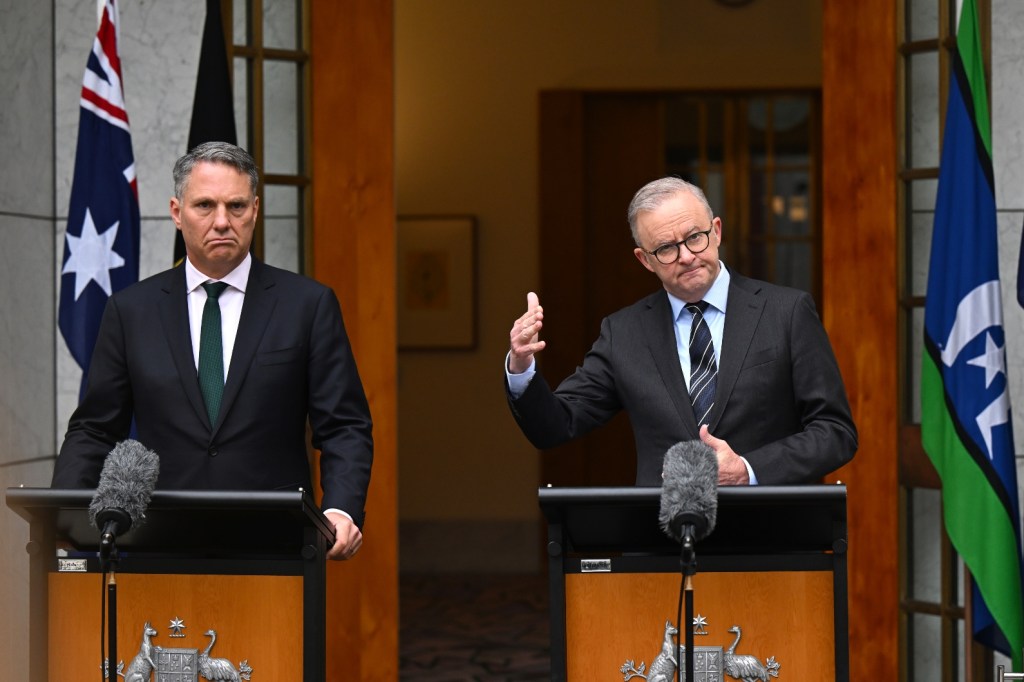
“Investing in a future made in Australia” is the slogan repeated over and over in the federal budget documents. But if you want to understand where the Albanese government is focusing its manufacturing investments, look to Defence.
To “strengthen our economic resilience”, the budget invests $22.7 billion to advance the Future Made in Australia (FMIA) project over a decade — less than half of the $50.3 billion in additional funding now earmarked for Defence over the same period.
The smaller pot of money for FMIA includes $3.2 billion for the Australian Renewable Energy Agency “to support the commercialisation of technologies … critical to net zero”, as well as $1.3 billion for a program called Hydrogen Headstart to support “early-movers investing in the industry’s development”. There’s also the already announced $466.4 million in federal funds for quantum computing company PsiQuantum, and $566.1 million for mapping critical mineral deposits and groundwater systems.
The point of it all, according to Jim Chalmers’ budget speech, is to help make Australia “an indispensable part of the global economy”.
However, the FMIA package — which will cost nearly $1.9 billion over the forward estimates to the financial year 2027-28 — is dwarfed by funding over the same period for an energy bill relief fund ($3.5 billion), infrastructure investment ($2.9 billion), Services Australia ($2.7 billion), aged care funding ($2.2 billion), and rent assistance ($1.9 billion).
The other honey pot — the one with $50.3 billion allocated to the military (which brings overall Defence spending to $765 billion over a decade) — includes funding for a “larger and more lethal” fleet of surface ships and a long-range strike and autonomous weapons systems.
But whether they’re bombs or batteries, the products driving Australia’s domestic manufacturing future will ignite an intense demand for skilled labour — a demand the Australian economy can’t currently meet.
But Labor claims to have a plan for that — with 10,000 new energy apprentices to be lured by promises of $10,000 “incentive payments”, the VET teaching workforce for clean energy courses to be “turbocharged” by a $30 million investment, and women to be incentivised to join male-dominated sectors critical to the Future Made in Australia package by a $55.6 million careers program. Apprentices in priority occupations will also continue receiving $5,000 each in support payments until mid-2025, and employers who hire them will get $5,000 as well.
Defence workers, meanwhile, will be tempted by a $101.8 million workforce boost, including a pilot apprenticeship program for shipbuilding. A $165.7 million grants program will help “scale up” businesses that deliver what’s seen as “sovereign defence industrial priorities”.
If the future of Australia is in manufacturing, it’s a heavily militarised one.
This article is reproduced from our sister publication Crikey.
READ MORE:
Future Made in Australia puts premium on economic resilience

